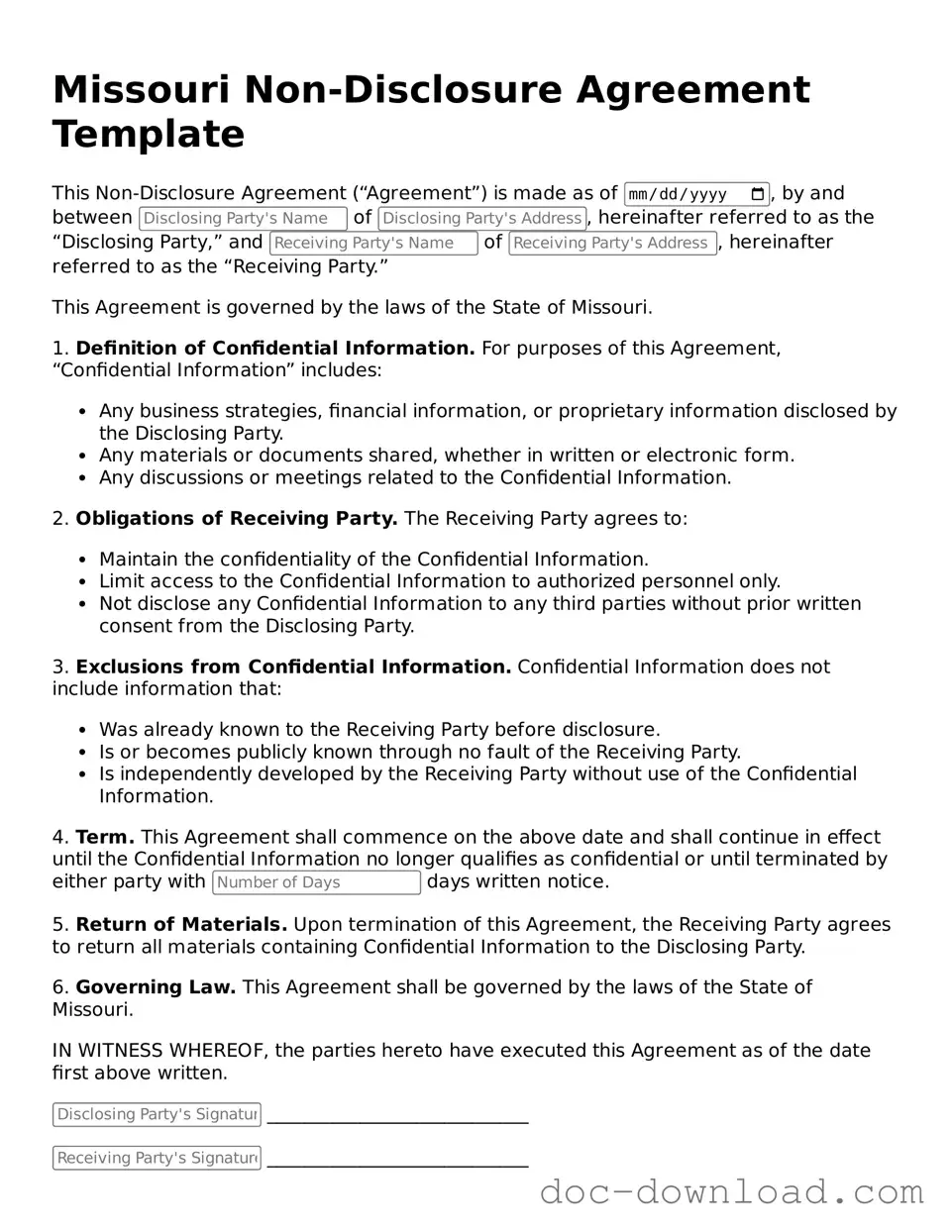A Non-Disclosure Agreement (NDA) is often compared to a Confidentiality Agreement. Both documents serve the same primary purpose: to protect sensitive information from being disclosed to unauthorized parties. While an NDA typically focuses on preventing the sharing of trade secrets and proprietary information, a Confidentiality Agreement may also cover personal information, making it broader in scope. Both agreements establish a legal framework for the parties involved to ensure that confidential information remains protected.
Another document similar to the NDA is the Non-Circumvention Agreement. This type of agreement is designed to prevent one party from bypassing another to engage directly with clients or partners. While an NDA focuses on confidentiality, a Non-Circumvention Agreement emphasizes the protection of business relationships. It ensures that the parties do not exploit each other's contacts or opportunities without consent.
The Mutual Non-Disclosure Agreement is also closely related. This document is used when both parties intend to share confidential information with each other. Unlike a one-sided NDA, which protects only one party's information, a Mutual NDA creates obligations for both sides. This ensures that both parties can freely exchange sensitive data while maintaining confidentiality.
A Proprietary Information Agreement (PIA) is another document that shares similarities with an NDA. A PIA specifically focuses on protecting proprietary information, which can include trade secrets, business plans, and technical data. While an NDA may cover a broader range of confidential information, a PIA is more targeted, emphasizing the protection of unique business assets.
To establish a clear framework for your LLC, consider utilizing a well-structured Operating Agreement, which is essential for outlining the governance and operational procedures of your business. You can access a fillable form for the Operating Agreement by following this link: your fillable Operating Agreement form.
The Employee Confidentiality Agreement is often used in employment contexts. This document requires employees to keep company information confidential during and after their employment. Similar to an NDA, it aims to protect sensitive information from being disclosed. However, it is tailored to the employer-employee relationship and often includes specific clauses related to the duration of confidentiality obligations.
A Service Provider Agreement may also include confidentiality clauses similar to those found in an NDA. This document governs the relationship between a service provider and a client, outlining the terms of service and confidentiality obligations. While the primary focus is on the services rendered, confidentiality clauses ensure that any sensitive information shared during the engagement remains protected.
The Licensing Agreement is another document that can include confidentiality provisions. This agreement allows one party to use another's intellectual property under specified conditions. While the primary focus is on licensing rights, confidentiality clauses may be included to protect sensitive information exchanged during the licensing process.
The Joint Venture Agreement often contains confidentiality clauses akin to those in an NDA. When two or more parties collaborate on a project, they may share sensitive information. A Joint Venture Agreement outlines the terms of the collaboration while ensuring that any confidential information shared remains protected from unauthorized disclosure.
Finally, the Collaboration Agreement can be compared to an NDA. This document is used when two or more parties work together on a project or initiative. While it outlines the roles and responsibilities of each party, it may also include confidentiality clauses to protect any sensitive information shared during the collaboration. This ensures that all parties can work together without fear of disclosing proprietary information.
